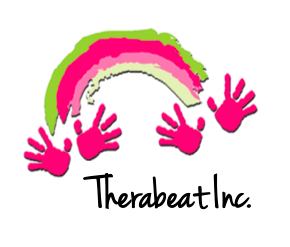Angelman syndrome is a condition that is caused by a genetic change in the UBE3A gene. This change can cause delayed development, speech problems, balance needs, cognitive disability, and occasionally seizures. The developmental delays begin between 6 months to a year of age and are often the first sign of Angelman syndrome. According to Sommese and Corrado (2021), more than 80% of Angelman syndrome patients experience seizures with onset before the age of three.
Additional characteristics of individuals with Angelman syndrome consist of the following:
Seizures
Stiff or jerky movements
Small head size by age 2
Tongue thrusting
Hand flapping and arms uplifted when walking
Crossed eyes
Scoliosis
Angelman Syndrome is rare and most often researchers do not know what the cause is for the genetic change that results in the syndrome. Physical, Speech, and Occupational Therapy for individuals with Angelman syndrome has been proven to be effective and often targets physical and sensory goals. Music therapy is an approach that can effectively target and improve these areas as well.
Common music therapy techniques used with Angelman syndrome consist of:
Using mnemonic devices to teach factual information (name, address, phone number) as well as for cognitive rehearsal for life and leisure skills.
Effective for gait training, using rhythmic entrainment. Engaging in movement to music can target gross motor skills, such as improving hand use, crossing the midline, and reaching both high and low.
Targets receptive communication skills through choice-making, motor planning, sentence structure, speech intelligibility, phonemic awareness, and pattern of language.
When providing collaborative intervention with other disciplines, such as Speech Therapy, Occupational Therapy, or physical therapy , music therapy can provide sensory stimulation and increase motivation while targeting various areas.
The neurologic music therapy technique, Musical Attention Control Training, targets various kinds of attention, such as selective, divided, and sustained attention, by directing a patient using a musical stimuli (Thaut & Hoemberg, 2014).
Overall, there is very little current research on music therapy and Angelman syndrome. The most recent studies explored the differences in response to music in individuals with Angelman syndrome and individuals with Prader-Willi Syndrome. The most significant finding documented was the effect music had in reducing heart rate in individuals with Angelman syndrome. The article concluded that “because Angelman Syndrome is associated with short attention span, and because heart rate deceleration is known to be related to orienting response,” the auditory stimuli of music were seen to aid in therapeutic treatment for Angelman syndrome.
-Rebecca Smith, Music Therapy Intern
References:
Angelman Syndrome. (2024, March 8). Mayo Clinic Staff. https://www.mayoclinic.org/diseases-conditions/angelman-syndrome/symptoms-causes/syc-20355621#:~:text=Angelman%20syndrome%20is%20a%20condition,happy%20and%20easy%20to%20excite.
Guy, J. (2005). Music Therapy & Angelman Syndrome Fact Sheet. Music Therapy Center of California. https://www.themusictherapycenter.com/wp-content/uploads/2016/11/mtcca_angelman.pdf
Kotler, J., Mehr, S. A., Egner, A., Haig, D., & Krasnow, M. M. (2019). Response to vocal music in Angelman syndrome contrasts with Prader-Willi syndrome. Evolution and Human Behavior, 40(5), 420–426. https://doi.org/10.1016/j.evolhumbehav.2019.05.003
Sommese, M., & Corrado, B. (2021). A Comprehensive Approach to Rehabilitation Interventions in Patients with Angelman Syndrome: A Systematic Review of the Literature. Neurology International, 13(3), Article 3. https://doi.org/10.3390/neurolint13030036
Thaut, M. H., & Hoemberg, V. (Eds.). (2014). Handbook of Neurologic Music Therapy. Oxford University Press

